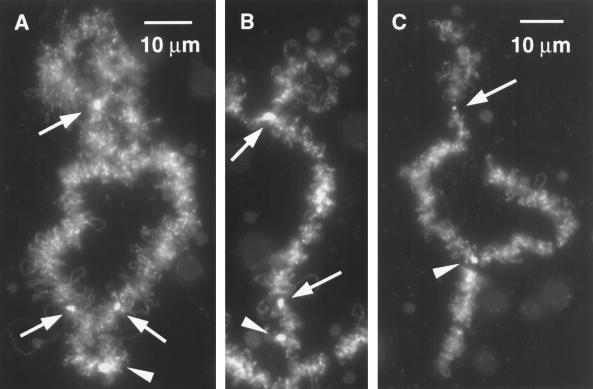Figure 6.
(A) Bivalent 11 is identifiable by a terminal granule at the end of its long arm (arrowhead) and axial granules at positions 0.16 and 0.80 (arrows). In this example there is a single fused granule at position 0.80. The centromere lies immediately beyond the fused granule but is not visible with this stain. The short arm has a characteristic diffuse structure. Sample is stained with mAb H14 against RNA Pol II. (B) Chromosome 11 derived from a sperm. The terminal granule (arrowhead), two axial granules (arrows), and the diffuse short arm are recognizable. (C) Another example of chromosome 11 derived from a sperm. The axial granule at 0.16 is not evident in this image, but the chromosome is reliably identified by the axial granule at 0.80 (arrow), the diffuse short arm, and the terminal granule (arrowhead), which is fused to the terminal granules of two other chromosomes to give a triradiate figure.

